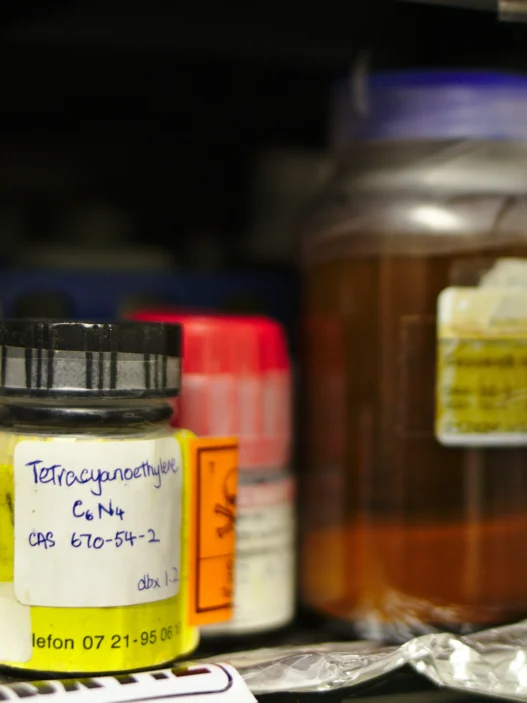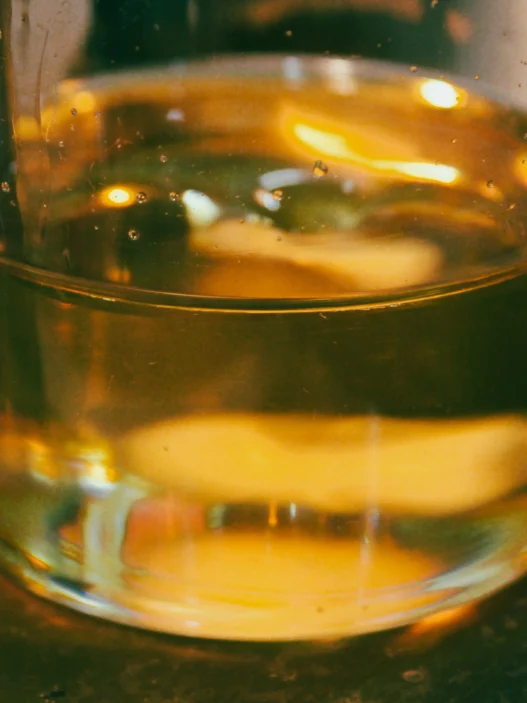Bithionol is a chemical compound that has been used in various consumer products such as soaps, shampoos, and antiseptic creams. It is known for its antibacterial and antifungal properties, making it a common ingredient in products designed to promote hygiene and prevent infections. While not as commonly used as other antimicrobial agents, bithionol still plays a role in everyday life by helping to keep our bodies and living spaces clean and free of harmful microbes.
Table of Contents:
- 💡 Commercial Applications
- ⚗️ Chemical & Physical Properties
- 🏭 Production & Procurement
- ⚠️ Safety Considerations
- 🔬 Potential Research Directions
- 🧪 Related Compounds
💡 Commercial Applications
Bithionol, a synthetic organosulfur compound, has been historically used as an antibacterial and antifungal agent in various commercial and industrial applications. It has been widely utilized as a preservative in personal care products such as soaps, shampoos, and cosmetics due to its antimicrobial properties. Additionally, Bithionol has been employed as a wood preservative to protect against fungal decay and insect damage.
In the realm of drug and medication applications, Bithionol has been explored for its potential as an antiparasitic agent against various parasitic infections. Research has shown promising results in the use of Bithionol in treating parasites such as tapeworms and schistosomes. Its mechanism of action involves disrupting the energy metabolism of parasites, leading to their death.
Despite its efficacy, the use of Bithionol has been limited due to concerns over its toxicity and environmental impact. However, ongoing research aims to further explore its therapeutic potential and develop safer derivatives for medical use. The compound’s unique properties make it a valuable candidate for addressing various health challenges, making it a subject of interest in the pharmaceutical industry.
⚗️ Chemical & Physical Properties
Bithionol is a white to pale yellow crystalline powder with a faint odor. It is sparingly soluble in water and ethanol, but more soluble in chloroform and acetone.
The molar mass of Bithionol is 342.3 g/mol and its density is approximately 1.4 g/cm3. When compared to common food items, Bithionol has a higher molar mass and density than substances like sugar (180.16 g/mol, 1.59 g/cm3) and salt (58.44 g/mol, 2.16 g/cm3).
Bithionol has a melting point of 191-199°C and a boiling point of approximately 300°C. In comparison, common food items like butter (melting point around 32°C) and water (boiling point at 100°C) have significantly lower melting and boiling points.
Bithionol is slightly soluble in water and has a low viscosity. In contrast, common food items like sugar and salt are highly soluble in water, while substances like honey and syrup have higher viscosity compared to Bithionol.
🏭 Production & Procurement
Bithionol is produced synthetically through a multistep chemical process. The key starting materials include p-chlorothiophenol and ethylene dichloride. These compounds undergo a series of reactions to ultimately yield Bithionol.
Bithionol can be procured through various chemical suppliers that specialize in pharmaceutical intermediates. The compound is typically available in bulk quantities and can be purchased by pharmaceutical companies for further processing. Transportation of Bithionol is typically carried out using standard shipping methods, such as air or sea freight, in compliance with regulatory guidelines.
In the pharmaceutical industry, Bithionol is often procured through direct sourcing from manufacturers or through specialized distributors. The compound is typically stored and transported in tightly sealed containers to prevent degradation. Quality control measures are implemented throughout the production and distribution process to ensure the purity and potency of Bithionol.
⚠️ Safety Considerations
Safety considerations for Bithionol include its potential to cause skin and eye irritation upon contact. It is also harmful if ingested or inhaled, and may cause respiratory irritation. Proper personal protective equipment, such as gloves and goggles, should be worn when handling Bithionol to prevent exposure.
It is important to understand the hazard statements associated with Bithionol in order to safely handle and use the chemical. Hazard statements include “Causes skin and eye irritation,” “Harmful if swallowed,” and “May cause respiratory irritation.” These statements serve as warnings for the potential risks and dangers posed by Bithionol, highlighting the importance of taking necessary precautions to prevent harm.
Precautionary statements for Bithionol focus on measures to be taken to ensure safe handling and use of the chemical. Precautionary statements include “Wear protective gloves/eye protection/face protection,” “IF IN EYES: Rinse cautiously with water for several minutes,” and “IF SWALLOWED: Rinse mouth. Do NOT induce vomiting.” These statements emphasize the importance of following proper safety protocols to minimize the risk of exposure and harm when working with Bithionol.
🔬 Potential Research Directions
Potential research directions for bithionol include its efficacy as an antifungal agent against various strains of fungi, particularly those resistant to conventional treatments. Studies may also explore the compound’s potential as an anti-parasitic agent, particularly in the context of schistosomiasis and other parasitic infections.
Further research could investigate bithionol’s mechanisms of action at the molecular level, shedding light on how the compound disrupts the growth and survival of fungi and parasites. This could lead to the development of novel therapeutic approaches targeting specific pathways that bithionol affects, potentially improving treatment outcomes and reducing the risk of resistance development.
Exploring the pharmacokinetics and pharmacodynamics of bithionol in different patient populations could provide valuable insights into its safety profile, optimal dosing regimens, and potential drug interactions. Additionally, clinical trials evaluating the compound’s efficacy and tolerability in humans could pave the way for its eventual approval for medical use in the treatment of fungal and parasitic infections.
🧪 Related Compounds
One similar compound to Bithionol based upon molecular structure is Hexachlorophene. Also known as Nabac, this compound is an antibacterial agent commonly used in soaps and other personal care products. Hexachlorophene shares a similar chemical structure to Bithionol, containing chlorine atoms that confer antibacterial properties.
Another compound with a molecular structure similar to Bithionol is Triclosan. Widely used as an antibacterial and antifungal agent, Triclosan is found in many consumer products such as soaps, toothpaste, and deodorants. Like Bithionol, Triclosan contains chlorinated aromatic rings that contribute to its antimicrobial activity.
Chlorhexidine is another compound closely related to Bithionol based on molecular structure. This disinfectant and antiseptic agent is commonly used in oral care products, surgical scrubs, and skin cleansers. Chlorhexidine shares structural similarities with Bithionol, possessing a bisphenol ring with chlorine atoms that confer its antimicrobial properties.





